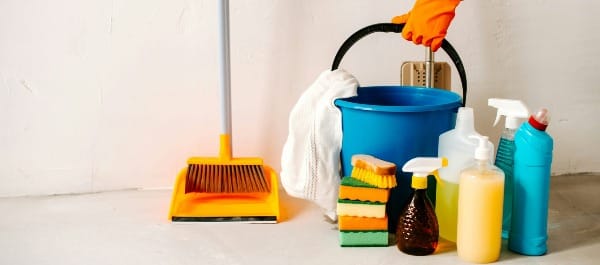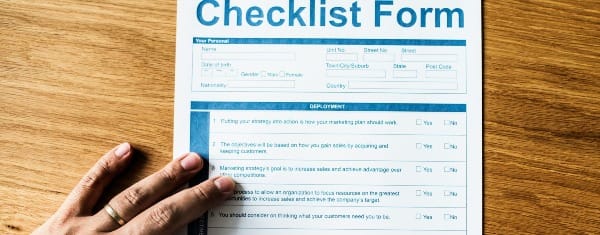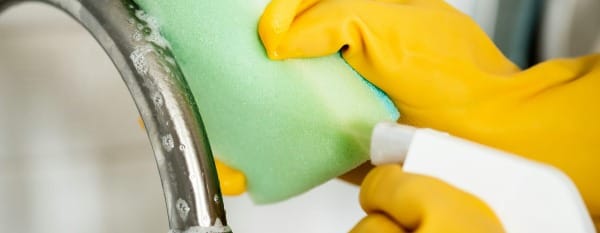Essential Guide to Excelling in the Cleaning Business with Practical Checklists

Running a successful cleaning company isn’t just about scrubbing and dusting; it’s all about being efficient and accurate. One tool that can completely transform how you operate is the trusty checklist. Let's dive into why checklists matter, how to craft ones that work wonders, and how they can make your cleaning business much more efficient.

Why Checklists Matter in Cleaning Services
Cleaning can be a whirlwind, especially when you have multiple clients every day. Checklists swoop in like superheroes to save the day. Here’s how they help:
Reduce Mistakes:
- Cleaning tasks like dusting and mopping require attention to detail. It’s easy to miss a spot, but checklists keep you on track, ensuring top-notch quality every time.
- Fewer mistakes mean happy clients, and happy clients stick around longer.
Ensure Consistency:
- Using checklists makes sure every cleaning job stays consistent, no matter who is on the team.
- This is vital because clients expect the same level of cleanliness each time.
Boost Efficiency:
- Checklists cut down on confusion about what to do next, enabling your team to work smart, not hard.
- They guide your crew to accomplish tasks with precision, saving time and ultimately making your business run more smoothly.
Enhance Client Satisfaction:
- Clients love reliable and thorough cleaning services. Checklists help you deliver on these expectations, showcasing your professional edge.
- They demonstrate your commitment to excellence, helping you build trust and credibility with clients.

Step 1: Figure Out Key Tasks for Your Checklists
Creating effective checklists starts with knowing exactly what tasks to include. Here’s what to do:
Break Down Each Cleaning Job into Steps:
- List tasks separately for both residential and commercial spaces. For example:
- Dust the furniture
- Vacuum carpets
- Clean windows
- Scrub bathrooms
- Take out trash
Being specific ensures nothing gets overlooked.
Tailor Checklists for Different Jobs:
- Customize your checklists to fit different kinds of jobs. A residential job differs from an office cleaning, right?
- This helps your team tackle the unique requirements of each job efficiently.
Incorporate Client-Specific Requests:
- Some clients have unique needs, like preferring eco-friendly cleaning products. Make note of these to meet their expectations.
- Adding these details shows you value their preferences and enhances their satisfaction.

Step 2: Organize Your Checklist for Ease and Efficiency
For a checklist to really work its magic, it needs to be well-organized. Here’s how:
Group Similar Tasks Together:
- Lump together tasks like dusting all surfaces or handling all kitchen tasks.
- This strategy minimizes backtracking, helping your team move through jobs efficiently.
Prioritize Tasks:
- Spot tasks that are time-consuming, like cleaning bathrooms, and put them at the top of the list.
- Mention how often tasks need to be done, be it daily, weekly, or per visit.
Use Clear, Actionable Items:
- Be specific with tasks. Instead of “Clean kitchen,” say “Wipe down kitchen counters.”
- Clear instructions prevent misunderstandings and ensure the team knows exactly what to do.

Step 3: Make Checklists Part of Daily Routine
Creating checklists is step one, but using them daily is where the real benefits come in. Here’s how to integrate them:
Ensure Easy Access to Checklists:
- Provide each team member with easy access to the relevant checklists for their tasks.
- Whether through printed sheets or digital versions on phones or tablets, make them convenient to use.
Cover Both Individual and Team Tasks:
- For personal tasks, individual checklists are gold. For team projects, a master list ensures team coordination.
- This clarity divides responsibility and keeps everyone on the same page.
Encourage Progress Tracking:
- Have your team tick off tasks as they complete them. This provides a sense of success and ensures thoroughness.
- Consider using digital tools like Google Keep or Trello for recording progress.
Regularly Review and Adapt Checklists:
- Periodically check if your checklists still fit the bill. Update them as your business evolves.
- This approach keeps them relevant and aligned with your company’s growth.

Step 4: Standardize Training and Onboarding with Checklists
Checklists aren’t just for cleaning—they’re fabulous for onboarding and training. Here's how to make them work for you:
Create Training Checklists:
- Develop lists that guide new hires through your cleaning processes, step-by-step.
- They help newbies understand the workflow and your quality standards, ensuring they’re fully equipped for the job.
Onboard New Team Members Smoothly:
- Design onboarding checklists covering essential procedures like safety and client interactions.
- This setup helps new team members hit the ground running and aligns them with your business ethos.

Step 5: Assess and Enhance Using Checklists
Checklists help spot where your business can improve. Here’s how to use them post-cleaning:
Gather Client Feedback:
- Encourage clients to share their thoughts on the cleaning. What did they love? Were any tasks skipped?
- Use their insights to refine your checklists and processes.
Solicit Team Input:
- Engage your team to discuss any challenges with their lists. Are any tasks unclear?
- Adjust the items to streamline their efforts and increase success.
Perform Efficiency Checks:
- Track the time taken for each job and task. If something takes too long, make necessary changes.
- This evaluation helps fine-tune your approach, ensuring you and your team work at optimum speed.

In the end, checklists are your secret weapon in delivering outstanding cleaning services. They significantly reduce mistakes, enhance efficiency, and support client satisfaction. With well-structured checklists, your team can consistently perform at their best. Remember, every checklist checked off is a step closer to growing your business. Keep shining and sweeping success your way!




